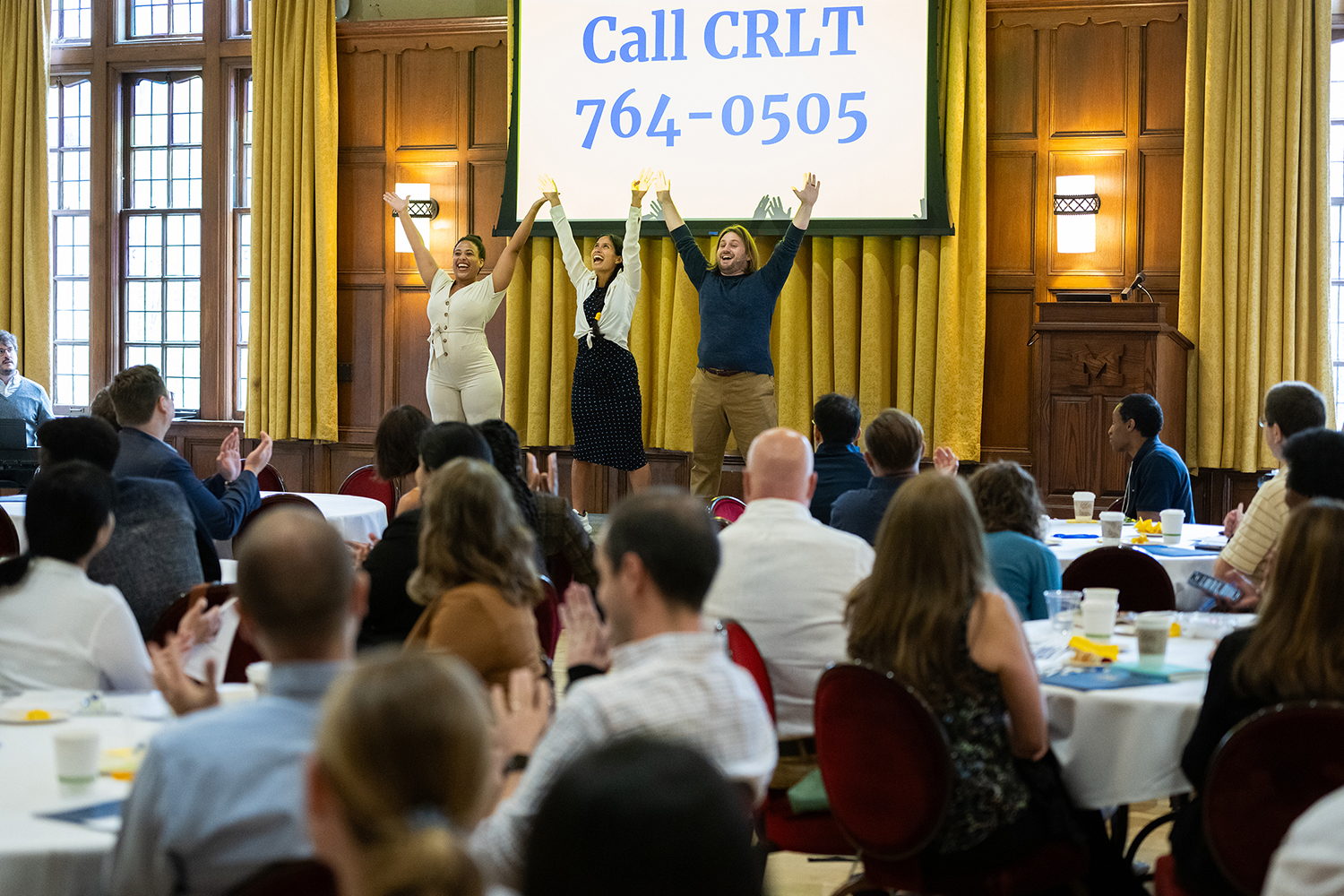
Players sessions are based on research, conversations with content experts and campus partners, interviews with members of the U-M community, and our lived experiences navigating higher education. By staging interpersonal and structural dynamics present in the academy, the Players illuminate common barriers that people face in navigating academic life and prompt serious consideration of the responsibilities they have to reshaping higher education so that it can live into its promise of being a place where all community members can truly thrive.
We use performance to:
- Illustrate the relationship between individuals’ lived experiences and systems-level practices. We use embodied case studies to explore how standard university practices related to teaching, hiring, mentoring, evaluation, and more advantage some members of academic communities while disadvantaging others.
- Honor both the specificity of individual experience and broader patterns of educational and professional exclusion. By examining common challenges faced by members of the higher education community via an individual’s particular experiences, we invite participants in our sessions to engage: 1) move away from abstraction and consider the human stakes of academic practices and 2) allow deep engagement without requiring those present to share their own personal experiences of challenge.
- Consider multiple perspectives. The challenges explored in Players sessions are not one dimensional. Performance allows us to compassionately stage different understandings and experiences of those challenges. In doing so, we are able to quickly map the contours of the problem(s) under consideration while providing audience members with a variety of pathways into the work of the session.
- Facilitate shared dialogue. By viewing the same performance, participants in a Players session establish a shared point of reference for meaningful exploration and action with their colleagues both within and outside of a session. By pairing every performance with a tailored facilitated dialogue, Players sessions also support participants in engaging productively about topics that in other settings may provoke conflict.
- Promote action. Across all of our sessions, we use theatre to tell stories in modalities that more affectively, creatively, and memorably present research, ideas, and/or individual experiences. In that way, we hope to increase the stickiness of an idea for participants and promote the likelihood of action-oriented change.



